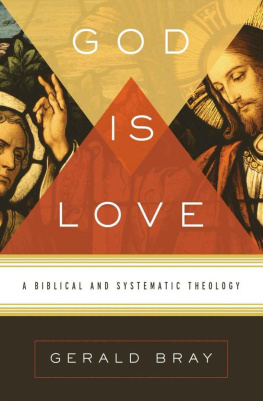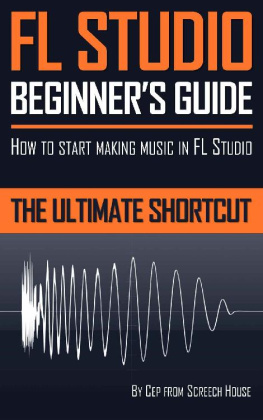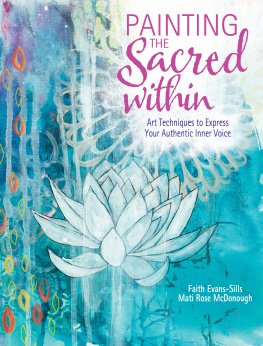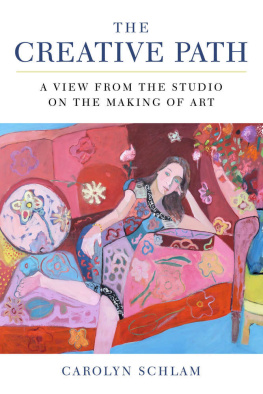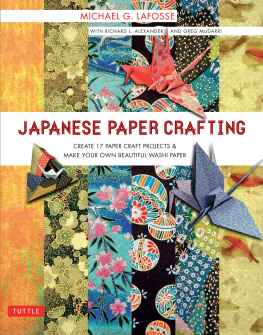Art and Faith
Art and Faith
A THEOLOGY OF MAKING
Makoto Fujimura
Foreword by
N. T. WRIGHT

Published with assistance from the Louis Stern Memorial Fund.
Copyright 2020 by Makoto Fujimura.
All rights reserved.
This book may not be reproduced, in whole or in part, including illustrations, in any form (beyond that copying permitted by Sections 107 and 108 of the U.S. Copyright Law and except by reviewers for the public press), without written permission from the publishers.
Yale University Press books may be purchased in quantity for educational, business, or promotional use. For information, please e-mail (U.K. office).
Designed by Dustin Kilgore
Set in Adobe Garamond Pro and Avenir Next
ISBN 978-0-300-25414-3 (alk. paper)
Library of Congress Control Number: 2020938043
A catalogue record for this book is available from the British Library.
This paper meets the requirements of ANSI/NISO Z39.48-1992 (Permanence of Paper).
Contents
Foreword
Makoto Fujimura is one of those rare artists with the ability to explain what he does, why he does it, and how his vocation makes sense within his larger worldview. Since this worldview is explicitly and intricately Christian, this makes him doubly rare. As he says in this new and vibrant book, it has been fashionable among the Western art community to ignore or scorn faith of any sort, particularly faith in Jesus as Lord. I dont know whether this long-standing prejudice has come about because of young artists reacting against the earlier and powerful traditions of Christian painting, or because of the shallow and trivial versions of Christianity that many people in our day have encountered. But Makos faith is anything but shallow or trivial. Like the amazingly delicate and complex materials with which he paints to such stunning effect, his faith commitment has been crafted and forged through good times and bad, emerging with the glow and multilayered texture we see in the paintings themselves. Since Mako honors me with occasional reference to my own work, I should happily disclose that I have been an admirer of his work, and then a friend, for several years. My two original Fujimura paintings are among my most treasured possessions. I am therefore delighted to write briefly, not so much to commend this bookit will do that quite well for itselfbut to celebrate it.
As readers will discover, the book itself is a work of art. Like Makos paintings, its many layers of meaning are laid carefully on top of one another, with the individual parts crafted from materials prepared with patient skill. We have here a remarkable collage of biblical exegesis and interpretation, dialogue with artists and poets, reflection on the horrors of the modern world, musings on the Holy Land, deep visible roots in the Japanese traditions of art, and the sense of a personal journey undertaken in humility and hope, with weeping and worship never far from one another. In a book, of course, these necessarily appear one by one; but we quickly realize that each step in the argument colors, and gives vibrancy to, the others, and that we look through the whole collage at the great themes that emerge: the origin and meaning of all creativity in God the Maker himself; the new creation, already launched in Jesus and his resurrection; the way in which specific ancient Japanese techniques have enabled Mako to express in stunning visual effect his deep faith in the Jesus who leads his people through pain and suffering into the promised new world. The resultant picture is drawn together into a remarkable exposition, itself multilayered, of the scene in John chapters 11 and 12 where Jesus weeps at the tomb of Lazarus and engages the sisters, Mary and Martha, in rich, resonating dialogue, before Mary pours out her once-in-a-lifetime precious ointment upon Jesus himself.
This all adds up, as the subtitle suggests, to a Theology of Making: the sequel to Makos earlier work on culture care, seen as his radical alternative to the destructive and futile culture wars in which so many Christians have been caught up in recent decades. In order to underpin that earlier work, Mako is here striking out on new pathways. These owe their life, both in form and in substance, to the truth of Jesuss resurrectionthe event that is so much more than an isolated miracle and is rather the beginning of the long-awaited new creation in which all Jesuss followers are called to share. This is where my own work has tried to point (from the jealous perspective of a scholar who sees that what the artist does is ultimately more important!) to the very thing that Mako is doing. If we believe that God raised Jesus from the dead, and that (as the New Testament insists) this has brought about the unexpected launch of new creation, of the kingdom of God, on earth as in heaven, then our present vocations really do partake of that new creation, bringing fragments and flashes of new creation to birth in the midst of the still-darkened and sorrowing world. We are, to that extent, like the spies whom Moses sent into the land of Canaan, and who brought back fresh fruit from the promised land to the people still in the desert. Thats what artists like Mako are doing: making sometimes dangerous forays into Gods future, and returning to show an often disbelieving worldand, sadly, an often suspicious churchwhat that future is like.
One of the reasons for the suspicion is the mode of that showing. Some parts of the Western church have been so alarmed at rationalist attacks on the faith that they have attempted to mount rationalist counterarguments for belief. But the way forward, Mako insists, is not primarily intellectual, though its clear on every page of this book that this particular artist can match the philosophers and theologians stride for stride. God the Artist communicates to us first, he insists, before God the lecturerone of many striking aphorisms that glint and glimmer through the multifaceted exposition. At this point I sense him joining forces with the Scottish thinker Iain McGilchrist, whose now famous book The Master and His Emissary explains how Western culture has been increasingly dominated by left-brain rationalism while in fact our brains are designed to work best with the right brain (the Master) leading the way and the left brain (the Emissary) working out the details. In other words, the way to human wholeness (and, for a Christian, the way to that human wholeness which the gospel offers) is found not through the assembling of detailed facts and arguments in themselvesthey will come in at the proper timebut through the imaginative leap to glimpse the larger world unveiled in the gospel.
Mako thus challenges the overrationalist reductions both of skepticism and of some types of Christian expression and apologetics. Nor is he the kind of romantic who supposes that artists have an automatic inside track on the mind of God, or that human imagination must always be right. Imagination, he writes near the start of this book, gives us the wings to create, but it is through Christs tears and the invitation to the feast of God that we can be partakers of the New Creation. He therefore has warnings, not only for the undisciplined imagination of a kind of casual whatever-comes art or theology, but also for the kinds of Christianity that he refers to as plumbing theology, theories of Gods action in Christ that are designed simply to fix broken pipes rather than to ask what the pipes are there for in the first place. We are redeemed, he insists (for the avoidance of doubt, he insists strongly on a fully blown theology of redemption), not so that we can escape the world and go to heaven, but so that in the present age as well as the age to come we ourselves can be junior artists, apprenticed to the One True Artist, God himself. Pragmatismin the art world, in the wider culture, and in a church life that looks for success only in human termsis to be shunned. What counts is beauty. Beauty and mercy, in fact, are the two paths into the sacred work of Making into the New Creation.
Next page

